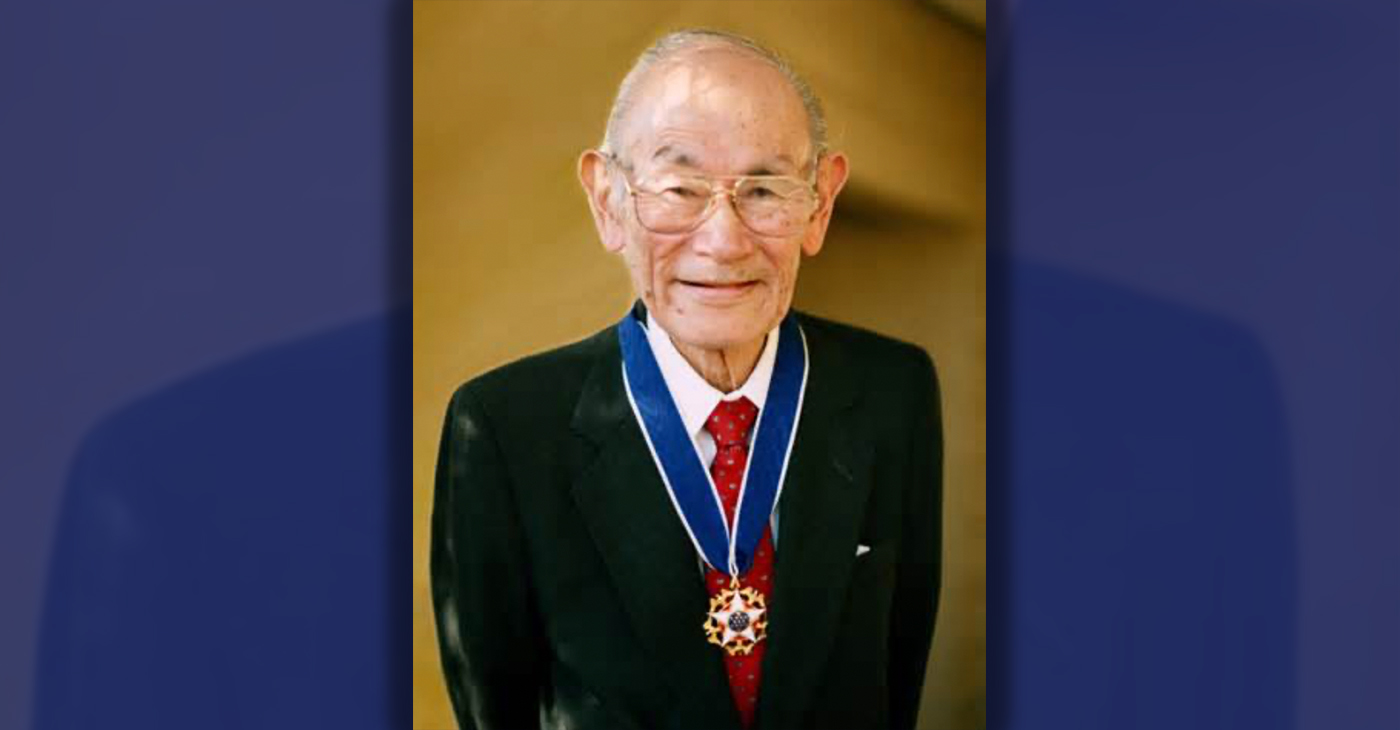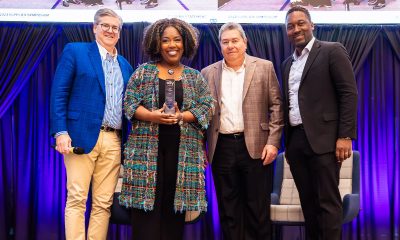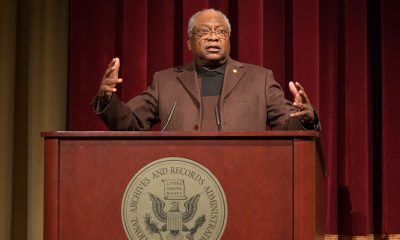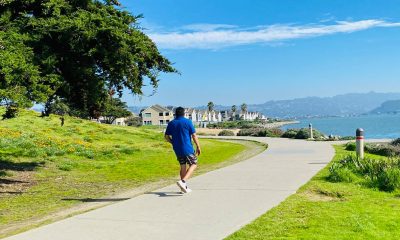Community
OP-ED: Who killed Doctor’s Medical Center?
By Jovanka Beckles
A quarter of a million people in Richmond and West Contra Costa County, a majority people of color community, will be without a community hospital as a result of a recent decision to phase down and finally close the doors of Doctors Medical Center (DMC) in San Pablo by April 21.
To not provide a full service hospital in West Contra Costa County is an example of environmental and institutional racism as experienced by predominantly poor people of color.
In large part due to the location of Chevron and other industries, West Contra Costa County has higher rates of cancer and asthma. These industries also pose a regular risk of explosion and release of dangerous chemicals.
There should be a hospital nearby in case of an industrial accident, but the largest and most profitable industry, the Chevron Corp., refused to contribute to keep DMC open.
The remaining hospital in the area, Kaiser Richmond, does not serve indigent patients, has an emergency room too small to handle the volume of the area, and does not have the capability to handle strokes and heart attacks.
The DMC emergency room closed to emergency services months ago. For most of the residents of Richmond, San Pablo and surrounding areas, emergency care is between 15 and 20 miles away over clogged freeways.
Already it appears that two or three people have died because they could not receive emergency care quickly enough.
But it’s not just an issue of emergency care. A community needs a hospital just as it needs its parks, police, libraries, schools and public transit.
When people require treatment in a hospital, it is important that their parents, children and other members of the family and friends be able to visit.
It is simply part of good medical care. People who need regular treatments, whether it’s for cancer or kidney problems, need a hospital that is convenient.
The long travel distances to a hospital place an extra burden on poor people.
There is very little chance that last-ditch efforts will save the hospital. One can only hope.
So who killed DMC?
First is our broken health care system. The problem with DMC was not how it was run. Whatever problems its management had, it provided service at lower cost than surrounding hospitals.
The problem was “its patient mix” – DMC treated “too many” low income or indigent patients.
The problem with DMC was not how it was run. Whatever problems its management had, it provided service at lower cost than surrounding hospitals. The problem was “its patient mix” – DMC treated “too many” low income or indigent patients.
Payments from Medicare and Medical were too low to cover costs. DMC lost money on every one of these patients.
Simply put, DMC failed because it provided medical care to people who are already underserved. As a result, DMC had to be subsidized.
The county refused to do it. The state government refused to reclassify DMC so it could receive a special subsidy for caring for “target” patients, and came up with a paltry $3 million.
Obamacare meant the hospital would benefit community members, but provide more services at a loss to DMC.
Many community members tried to save Doctor’s Medical Center. As a result of pressure from the community, the Richmond Progressive Alliance and the California Nurses Association, the Richmond City Council was pressured to allocate $15 million to support DMC.
Unfortunately, government leaders from other parts of the area turned their heads.
San Pablo contributed nothing more than to broker a deal to transfer land to the local casino. Neighboring cities Hercules, Pinole and El Cerrito were silent.
A majority of the county supervisors based in the East County would not help.
The Contra Costa Times ran a campaign for the closing.
Other hospitals in the region should have contributed. While they are called “non-profit,” Kaiser, Sutter and other hospitals are enormously profitable and have ways to transfer money to management.
They save a lot of money because of their “non-profit” status.
The existence of DMC actually saves them money by absorbing some of the indigent population they would otherwise have to treat. Yet they refused to join in the plan to keep DMC open.
There are a lot of institutions and individuals to blame for closing DMC, but in the end the main problem was that there were not enough political leaders willing to organize a campaign to force these institutions to save DMC.
This scenario is a case of classic institutional racism. Areas where people of color live are underserved supposedly not because of race, but because we are not wealthy and powerful
In the end the main problem was that there were not enough political leaders willing to organize a campaign to force these institutions to save DMC. This scenario is a case of classic institutional racism.
We have to figure out as a community how to get the medical care we need, we deserve and is our right.
Jovanka Beckles is a member of the Richmond City Council.
Activism
Oakland Post: Week of April 17 – 23, 2024
The printed Weekly Edition of the Oakland Post: Week of April 17 – 23, 2024

To enlarge your view of this issue, use the slider, magnifying glass icon or full page icon in the lower right corner of the browser window. ![]()
Activism
Oakland Schools Honor Fred Korematsu Day of Civil Liberties
Every Jan. 30, OUSD commemorates the legacy of Fred Korematsu, an Oakland native, a Castlemont High School graduate, and a national symbol of resistance, resilience, and justice. His defiant stand against racial injustice and his unwavering commitment to civil rights continue to inspire the local community and the nation. Tuesday was “Fred Korematsu Day of Civil Liberties and the Constitution” in the state of California and a growing number of states across the country.

By Post Staff
Every Jan. 30, OUSD commemorates the legacy of Fred Korematsu, an Oakland native, a Castlemont High School graduate, and a national symbol of resistance, resilience, and justice.
His defiant stand against racial injustice and his unwavering commitment to civil rights continue to inspire the local community and the nation. Tuesday was “Fred Korematsu Day of Civil Liberties and the Constitution” in the state of California and a growing number of states across the country.
One OUSD school is named in his honor: Fred T. Korematsu Discovery Academy (KDA) elementary in East Oakland.
Several years ago, founding KDA Principal Charles Wilson, in a video interview with anti-hate organization “Not In Our Town,” said, “We chose the name Fred Korematsu because we really felt like the attributes that he showed in his work are things that the children need to learn … that common people can stand up and make differences in a large number of people’s lives.”
Fred Korematsu was born in Oakland on Jan. 30, 1919. His parents ran a floral nursery business, and his upbringing in Oakland shaped his worldview. His belief in the importance of standing up for your rights and the rights of others, regardless of race or background, was the foundation for his activism against racial prejudice and for the rights of Japanese Americans during World War II.
At the start of the war, Korematsu was turned away from enlisting in the National Guard and the Coast Guard because of his race. He trained as a welder, working at the docks in Oakland, but was fired after the bombing of Pearl Harbor in 1941. Fear and prejudice led to federal Executive Order 9066, which forced more than 120,000 Japanese Americans out of their homes and neighborhoods and into remote internment camps.
The 23-year-old Korematsu resisted the order. He underwent cosmetic surgery and assumed a false identity, choosing freedom over unjust imprisonment. His later arrest and conviction sparked a legal battle that would challenge the foundation of civil liberties in America.
Korematsu’s fight culminated in the Supreme Court’s initial ruling against him in 1944. He spent years in a Utah internment camp with his family, followed by time living in Salt Lake City where he was dogged by racism.
In 1976, President Gerald Ford overturned Executive Order 9066. Seven years later, the 9th Circuit Court of Appeals in San Francisco vacated Korematsu’s conviction. He said in court, “I would like to see the government admit that they were wrong and do something about it so this will never happen again to any American citizen of any race, creed, or color.”
Korematsu’s dedication and determination established him as a national icon of civil rights and social justice. He advocated for justice with Rosa Parks. In 1998, President Bill Clinton gave him the Presidential Medal of Freedom saying, “In the long history of our country’s constant search for justice, some names of ordinary citizens stand for millions of souls … To that distinguished list, today we add the name of Fred Korematsu.”
After Sept. 11, 2001, Korematsu spoke out against hatred and discrimination, saying what happened to Japanese Americans should not happen to people of Middle Eastern descent.
Korematsu’s roots in Oakland and his education in OUSD are a source of great pride for the city, according to the school district. His most famous quote, which is on the Korematsu elementary school mural, is as relevant now as ever, “If you have the feeling that something is wrong, don’t be afraid to speak up.”
Community
For Cervical Cancer Month, Medical Community Focused on Education
January was Cervical Cancer Awareness Month. Physicians, advocates and others in the medical community commemorated the month by raising awareness about a form of cancer they say is highly preventable and treatable. Cervical cancer is caused by a virus called the human papillomavirus (HPV) and it develops slowly over time but can be prevented with proper care in girls as young as 13 years old.

By Magaly Muñoz
January was Cervical Cancer Awareness Month.
Physicians, advocates and others in the medical community commemorated the month by raising awareness about a form of cancer they say is highly preventable and treatable.
Cervical cancer is caused by a virus called the human papillomavirus (HPV) and it develops slowly over time but can be prevented with proper care in girls as young as 13 years old.
Sonia Ordonez, an OBGYN and gynecology surgeon at Kaiser Permanente, stated that as soon as people with cervixes reach the maturity reproductive age, they should start taking preventative measures like getting the HPV vaccine. The vaccine involves a series of two-doses for people aged 9 through 14 or three-doses for people 15 through 45 years old.
“I see a lot of young women who can’t remember or may not have gotten [the vaccine] when they were younger, or maybe got one, but we can give them the series of vaccines and restart at any point in time,” Ordonez said.
She said that cervical cancer is not the only cancer caused by HPV. Strains of the virus can also lead to throat, anal and penile cancers.
Screening is also an effective way to check for cervical cancer and should be done every three years after someone turns 21, doctors recommend. It is best to start as early as possible to catch occurrences early.
Ordonez said that this cancer is also more likely found in people of color and has led to more deaths overall.
A Mayo Clinic article published last month stated that Black women are more likely to be diagnosed and die of cervical cancer, compared to White women in the U.S.
2,000 Black women are diagnosed every year with cervical cancer and 40% die as a result.
“This disparity is not due to genetic differences among White, Black or Hispanic women, but rather related to systemic racism, access to healthcare and socioeconomic factors,” Dr. Olivia Cardenas-Trowers, a Mayo Clinic urogynecologist, said in the article.
Ordonez stated that immigrant women are also highly susceptible to the cancer, as many Latin American countries may not have accessibility to screenings or lack of insurance makes it harder for them to get tested.
Hispanic women are 40% more likely to be diagnosed with cervical cancer, and 30% more likely to die from it, as compared to non-Hispanic White women, according to the Office of Minority Health.
Family medicine physician, Joy Anyanwu, stated that the pandemic contributed to hesitancy about getting cervical cancer screenings among some women. Other factors are people’s aversion to vaccines, parents not wanting to believe that their children are or will become sexually active, and doubt about the overall effectiveness of the vaccine.
“The vaccine is very safe — over 97% effective in preventing cervical cancer,” Anyanwu said. “Even if you aren’t having sex, the earlier you start would actually help.”
Anyanwu said she understands that parents might not want to ask questions about their children’s reproductive health, but it’s a mindset that can be a barrier to having important conversation about prevention or care.
To keep families their families and communties healthy, the doctor emphasized that people should prioritize keeping up with their vaccine series and going to screenings every year.
-

 Activism4 weeks ago
Activism4 weeks agoOakland Post: Week of March 20 – 26, 2024
-

 #NNPA BlackPress3 weeks ago
#NNPA BlackPress3 weeks agoCOMMENTARY: D.C. Crime Bill Fails to Address Root Causes of Violence and Incarceration
-

 #NNPA BlackPress3 weeks ago
#NNPA BlackPress3 weeks agoMayor, City Council President React to May 31 Closing of Birmingham-Southern College
-

 #NNPA BlackPress4 weeks ago
#NNPA BlackPress4 weeks agoFrom Raids to Revelations: The Dark Turn in Sean ‘Diddy’ Combs’ Saga
-

 #NNPA BlackPress4 weeks ago
#NNPA BlackPress4 weeks agoCOMMENTARY: Lady Day and The Lights!
-

 Activism3 weeks ago
Activism3 weeks agoOakland Post: Week of March 27 – April 2, 2024
-

 #NNPA BlackPress4 weeks ago
#NNPA BlackPress4 weeks agoBaltimore Key Bridge Catastrophe: A City’s Heartbreak and a Nation’s Alarm
-

 #NNPA BlackPress4 weeks ago
#NNPA BlackPress4 weeks agoBaltimore’s Key Bridge Struck by Ship, Collapses into Water




















































